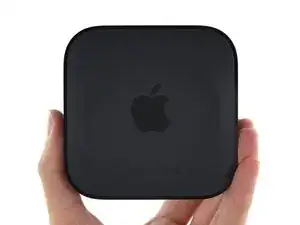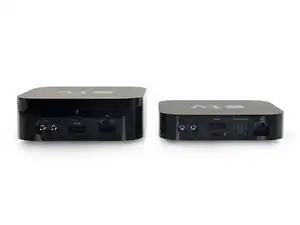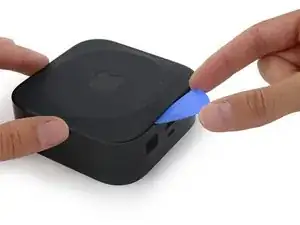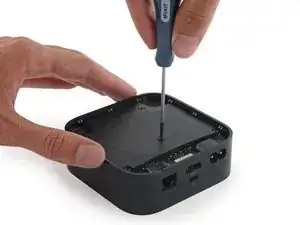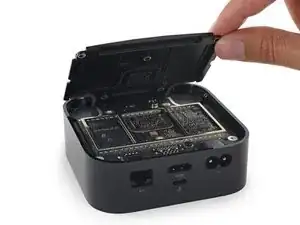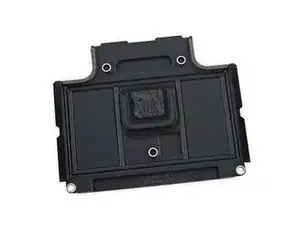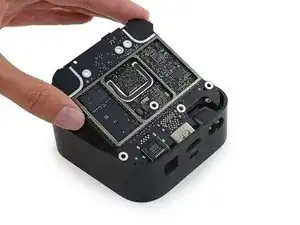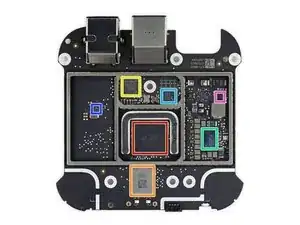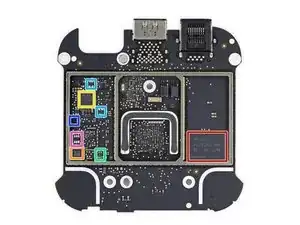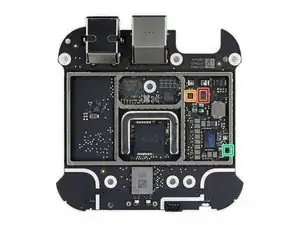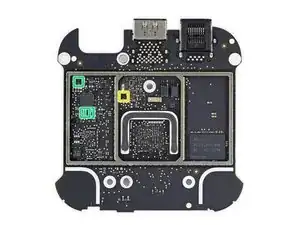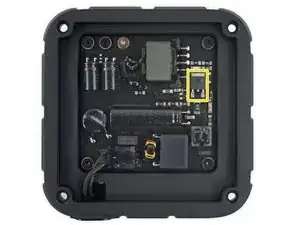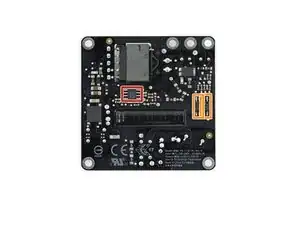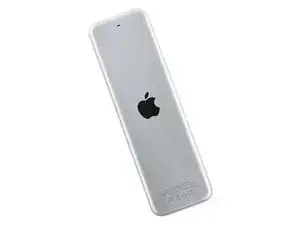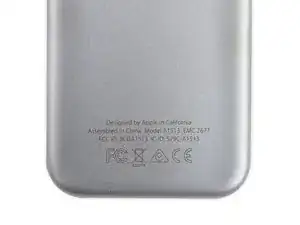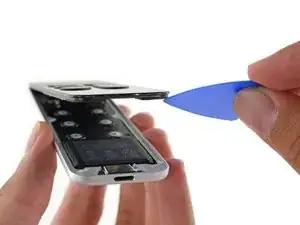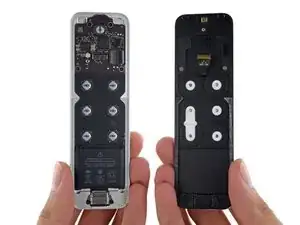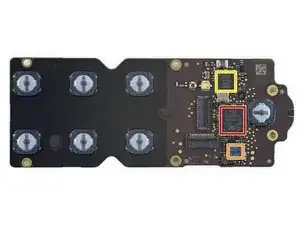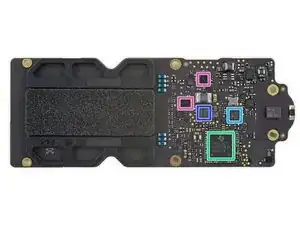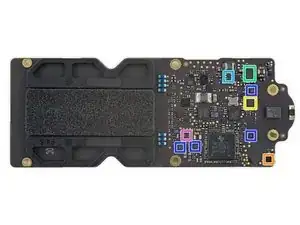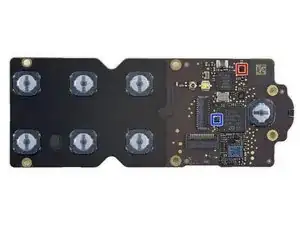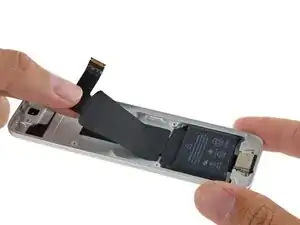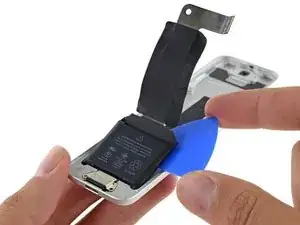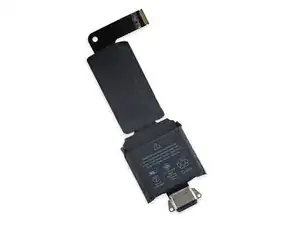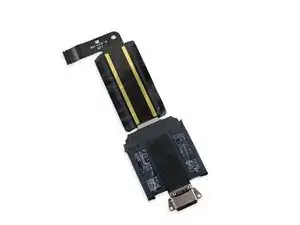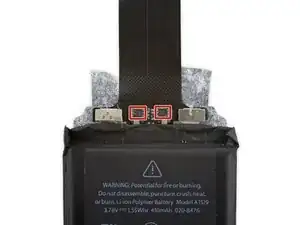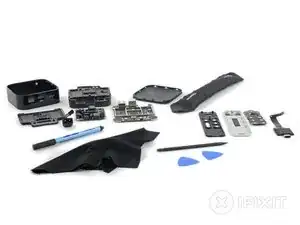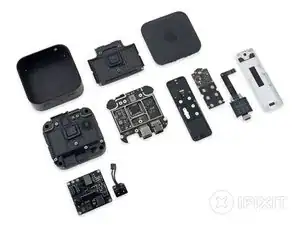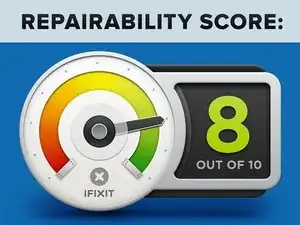Introduction
Apple fans are doing the happy dance, what with a slew of new devices coming out of Cupertino—including the first new Apple TV in more than three years. Our teardown engineers look pretty happy too. That's because we've got our hands on a 4th generation Apple TV. That's right, kids. It's teardown time!
Don't touch that dial—unless you're looking for more teardown news on our Facebook, Instagram, or Twitter.
Tools
-
-
We like to start with some specs, and in this case a lot of the good stuff is packed into the fancypants new remote. The box itself contains:
-
Dual-core, 64-bit Apple A8 chip
-
Ethernet, 802.11a/b/g/n/ac Wi-Fi, IR receiver, and HDMI 1.4 connectivity
-
...whilst the remote is packing:
-
Glass Touch surface
-
Dual microphones
-
Accelerometer and gyroscope
-
Bluetooth 4.0, IR transmitter, Lightning connector
-
-
-
The Apple TV has really packed on some pounds since its last iteration.
-
It seems to have lost a port in the process—the optical audio out has gone MIA.
-
Our teardown engineers go to work on the Apple TV and quickly find access through the bottom of the device—similar to the 3rd generation Apple TV.
-
Only a few plastic clips stand in the way here, with no adhesive or screws in sight.
-
-
-
Under the hood, we spy a few Torx screws.
-
We take our Pro Tech Screwdriver Set out for a quick spin to release the combo heat sink/EMI shield.
-
By the looks of it, this plate also serves as a bracket, giving the clips on the lower case something to latch onto. That's three functions in one component, folks.
-
-
-
Here are some chips to go with your TV:
-
Apple A8 APL1011 SoC, with SK Hynix H9CKNNNBKTBRWR-NTH 2 GB LPDDR3 SDRAM
-
Universal Scientific Industrial 339S00045 Wi-Fi module
-
SMSC LAN9730 USB 2.0 to 10/100 Ethernet controller
-
Apple 338S00057 (similar part number to the 338S00055 custom memory controller found in the Retina MacBook 2015) (power management IC)
-
Kinetic Technologies (formerly MegaChips) MCDP2700A1 DisplayPort-to-HDMI converter
-
Texas Instruments TPS62130A 3 A step-down converter
-
Fairchild Semiconductor DF25AU 010D 030D MOSFET
-
-
-
More chips on the bottom of the logic board:
-
SK Hynix H2JTEG8VD1BMR 32 GB NAND flash memory
-
NXP Semiconductor CBTL01112 multiplexer/demultiplexer switch (likely)
-
Texas Instruments MSP430V301 16-bit microcontroller
-
Texas Instruments INA213 current sense amplifier
-
ON Semiconductor LMV331SQ3T2G single comparator
-
Texas Instruments CD3255 power monitor (likely)
-
Nexperia (formerly NXP Semiconductor) 74LVC1G157GV single 2-input multiplexer
-
-
-
IC Identification, continued:
-
Renesas (formerly Intersil) ISL95870AHRUZ-T PWM DC-DC controller
-
Texas Instruments TPS715A01 80 mA / adj. LDO regulator
-
Diodes Incorporated 74LVC1G125FW5-7 non-inverting buffer/bus driver
-
Diodes Incorporated 74LVC2G07FW4-7 dual buffer gate
-
-
-
Last to come out of the box: a great big chunky heat sink with a cute little power supply board tucked away inside.
-
The redesigned power supply is rated at 12 V at 0.917 A. Compare that to the 3rd-gen Apple TV's main reactor, which pumped out 3.4 V at 1.75 A.
-
We noticed a distinct lack of cables connecting the power supply to the logic board. We're theorizing the power is either transmitted by magic, or through the heat sink screw posts.
-
And as a fun bonus, some chips:
-
NXP Semiconductor TEA1738LT switch mode power supply controller
-
Toshiba TLP291 photocoupler
-
STMicroelectronics STF6N65M2 650 V N-channel MOSFET
-
-
-
Behold, the new Siri Remote! Featuring dual microphones, a Glass Touch surface, and a Lightning connector, this remote is definitely a bit more complex than the Apple Remote of yesteryear.
-
Apple also packed in an accelerometer and gyroscope, which they hope you'll use to play games—and browse Airbnb.
-
With Bluetooth 4.0, the new Remote doesn't need direct line-of-sight with your TV.
-
That is, unless you want to control your actual TV. Apple points out that the remote for their new TV can also control a television or A/V receiver.
-
-
-
We found where Apple was hiding all the adhesive! Looks like our iOpener and pick don't get the day off after all.
-
The entire top end of the remote is a giant button. Beneath it lies a gap that gives us a nice, consistent groove to pick apart.
-
"Hey, Siri—say Ahhhh."
-
If only it was that easy... Actually, it was pretty easy. It seems there's a first for everything!
-
-
-
We're suddenly having flashbacks to the iPhone 5s. The top half is connected by a ribbon cable, hidden in the center of the device.
-
Our in-house EOD expert gets to work with a spudger and carefully disarms the trap.
-
With the top and bottom separated we notice a hidden yin yang motif. That's so zen of you, Apple.
-
-
-
OICURAQT—That's what we say whenever we identify an IC, like the ones on this logic board:
-
ST Microelectronics STM32L 151QD ultra-low-power ARM Cortex-M3 MCU
-
Broadcom BCM5976C1KUB6G touch screen controller (as seen in the iPhone 5s/5c and iPad Air)
-
CSR (Qualcomm) CSR1010 Bluetooth radio
-
Texas Instruments TMS320C5545 ultra-low-power digital signal processor
-
STMicroelectronics STMLS05 5-channel PMOS load switches
-
InvenSense ITG-3600 3-axis gyroscope
-
Texas Instruments BQ24250C battery charger and TI 49C37GI
-
-
-
Chip identification, continued:
-
Analog Devices ADAU7002 audio converter
-
AKM Semiconductor AK8963 3-axis electronic compass
-
Bosch Sensortec BMA282 accelerometer
-
ON Semiconductor memory (likely)
-
Texas Instruments TPS61220 boost converter
-
ON Semiconductor NCP335FCT2G 2 A load switch
-
Diodes Incorporated 74LVC1G58FW4 Configurable Multi-function Gate
-
-
-
Look at that! A ZIF connected Lightning port cable.
-
If Apple can pack a ZIF connector into a tiny remote like this then why is the iPad Lightning port soldered to the logic board?
-
Answer: Apple proprietary secret.
-
With just a bit of glue to pick apart, the Lightning cable/battery is out in a flash.
-
-
-
With the Lightning port/battery assembly free of the remote, we see that the battery is soldered to the Lightning port.
-
While we've never been a fan of soldered-on batteries, at least the Lightning port isn't soldered to the logic board!
-
Because this 410 mAh battery is rechargeable, you'll never scramble to find batteries for your TV remote again. Thanks, Apple!
-
At least not until it dies and you need to replace it.
-
And hiding out at the base of the flex cable are two ABLIC, Inc battery protection chips.
-
-
-
Apple TV (4th Generation) Repairability: 8 out of 10 (10 is easiest to repair).
-
Modular construction and only a few major components simplifies repair.
-
The power supply is a separate, replaceable component, and even its AC-in jack is modular.
-
Standard Torx screws used throughout, nothing proprietary.
-
The remote is held together with adhesive, but a wide gap makes it easy to pry apart.
-
The remote's battery and Lightning cable are soldered together—but not to anything else, so they should be an inexpensive component to replace.
-
Everything important is soldered to the logic board, meaning replacement or board-level soldering is required to solve port problems.
-
And that's a wrap. See you for an iPhone teardown down under! G'day, mate!
-
31 comments
Going from 3.4v to 12v! I have to wonder now what that A8 SoC is clocked at!
Brian -
Geekbench shows all the Apple TV's at 1GHz apart from an outlier at 1.5GHz
http://browser.primatelabs.com/geekbench...
That suggests it's running at 1.5GHz...
name99 -
The 1.5 GHz one was recorded in 09. The heatsink is probably only there because there's a big AC-DC transformer on top of the apple tv. Odds are it's clocked in a similar fashion to the A8 in the iPad Mini 4
Looks like a different design group worked on this. If it were Jonathan Ive's work it would have that iMac method of carving the case out of a chunk of aluminum and welding it shut with adhesive throughout.
Funny though - here's a device that is easy to get into, but one really doesn't need to whereas the iMac is something one might want to upgrade, but can't get into easily.
@name99 The 1.5 gHz geekbench benchmark is actually on an overclocked first generation Apple TV, back in 2009.

